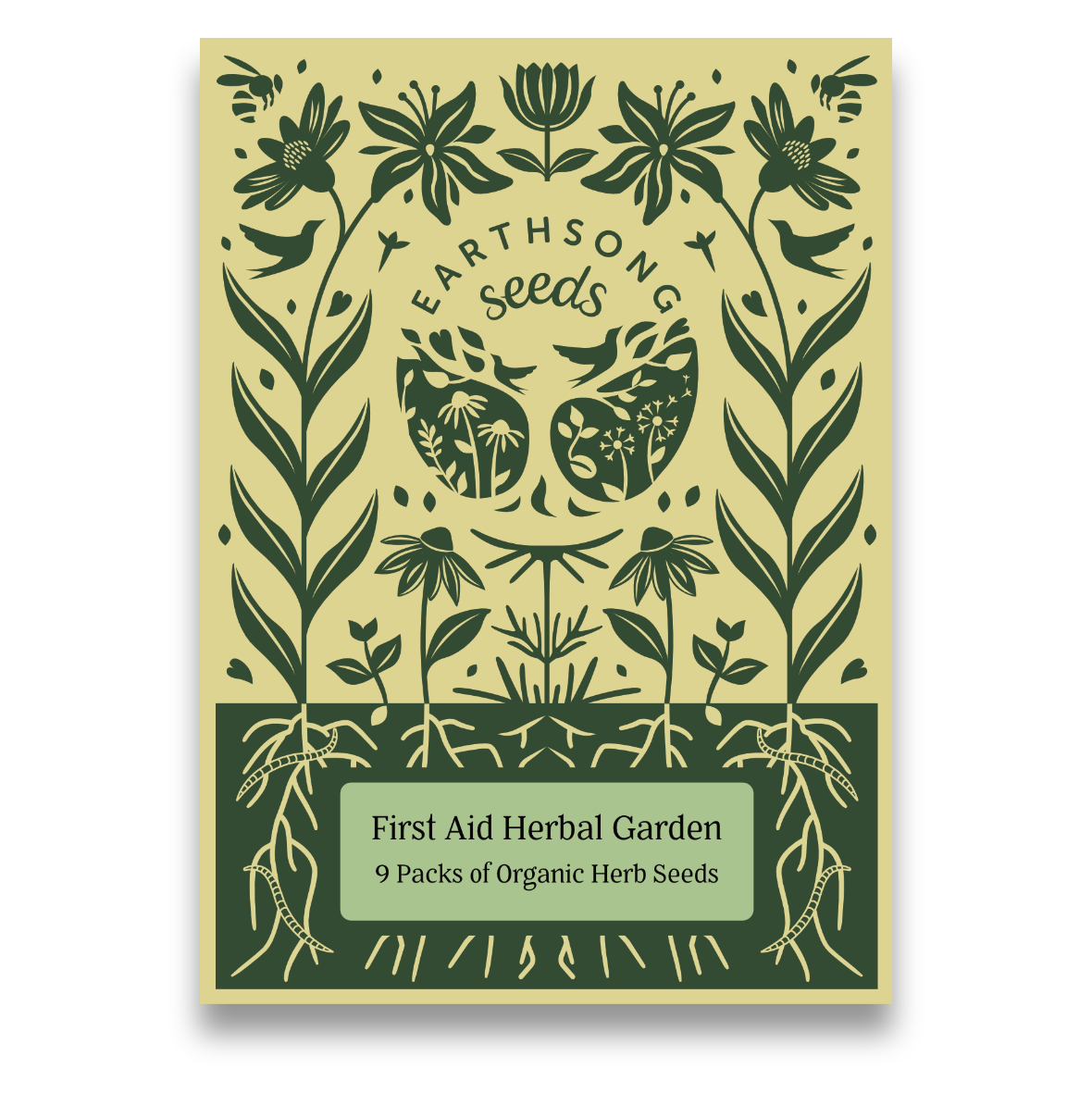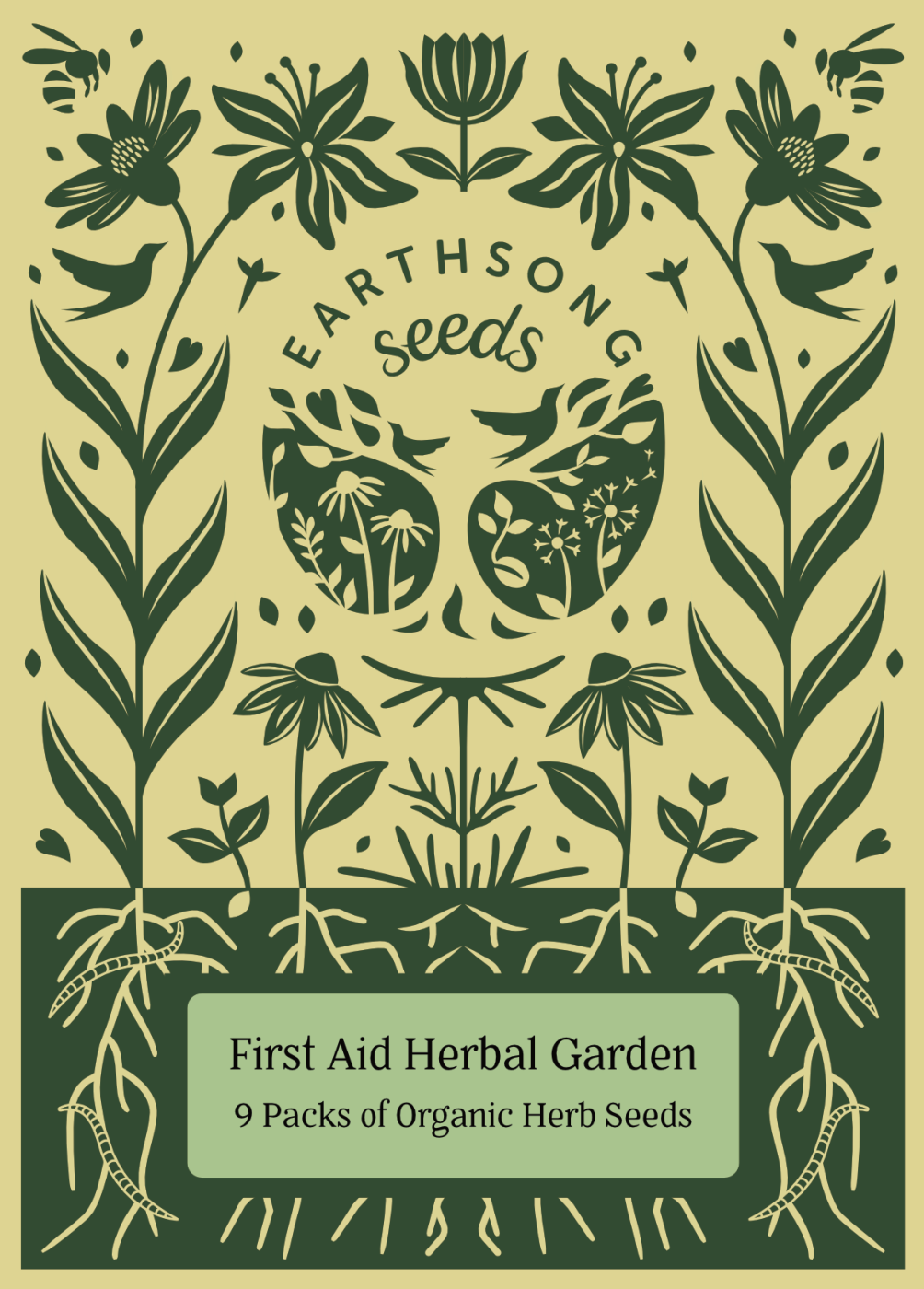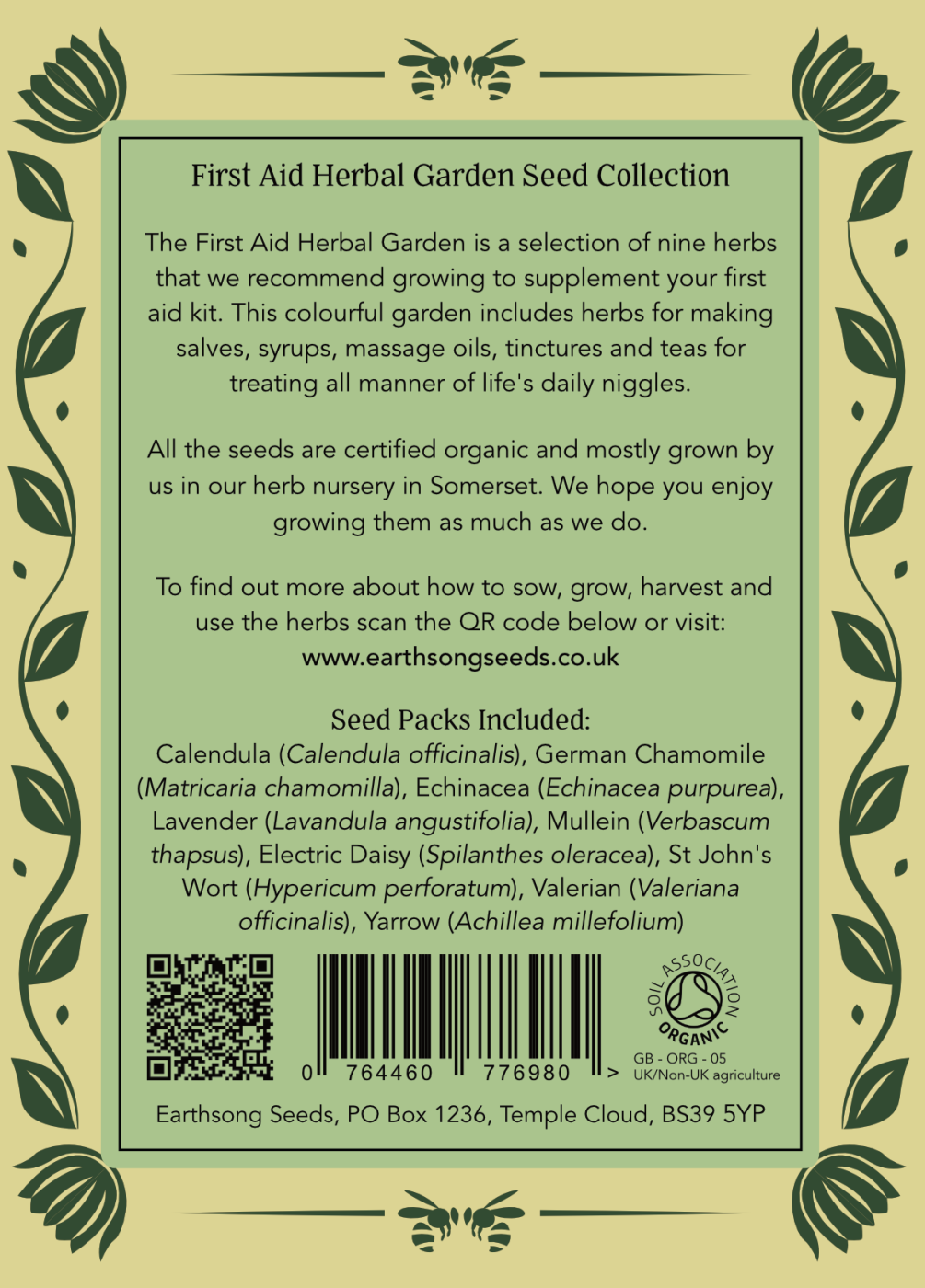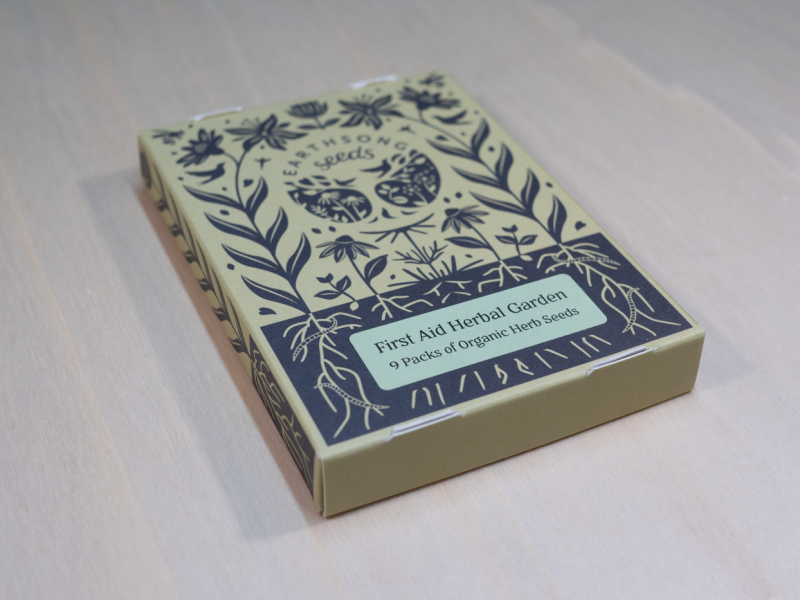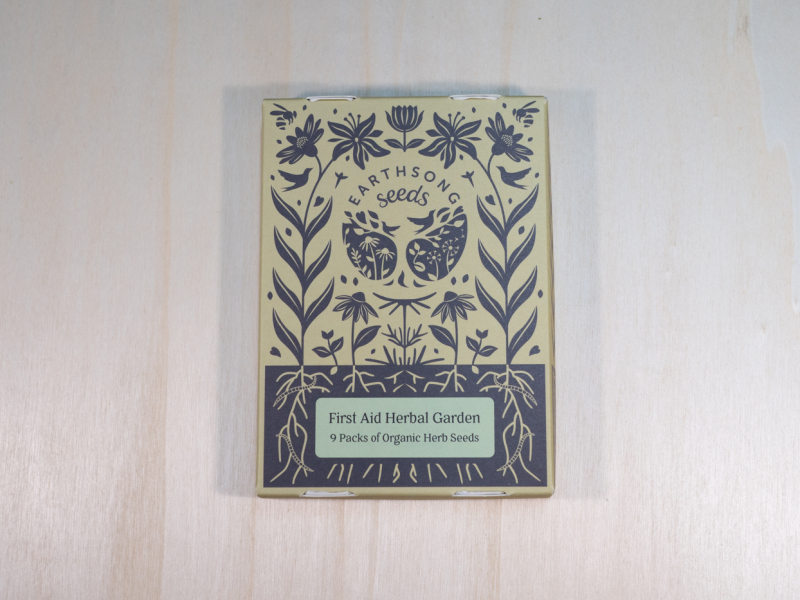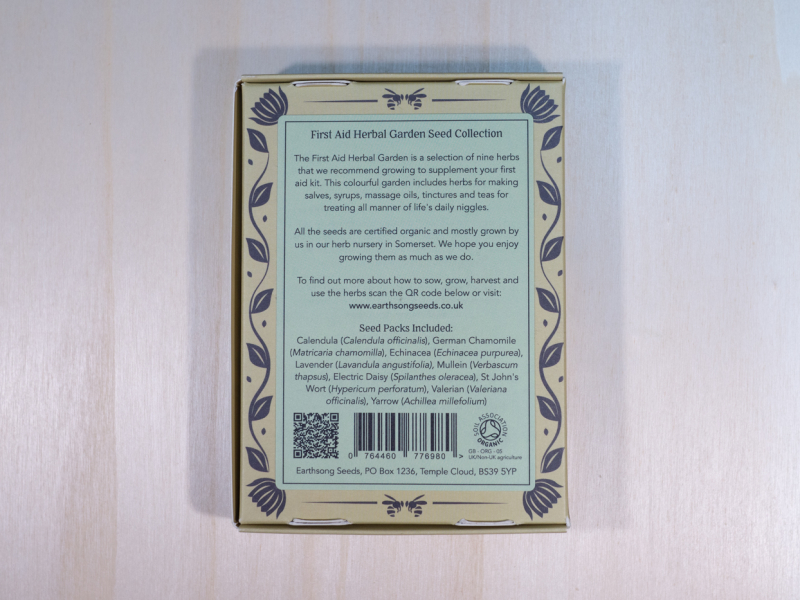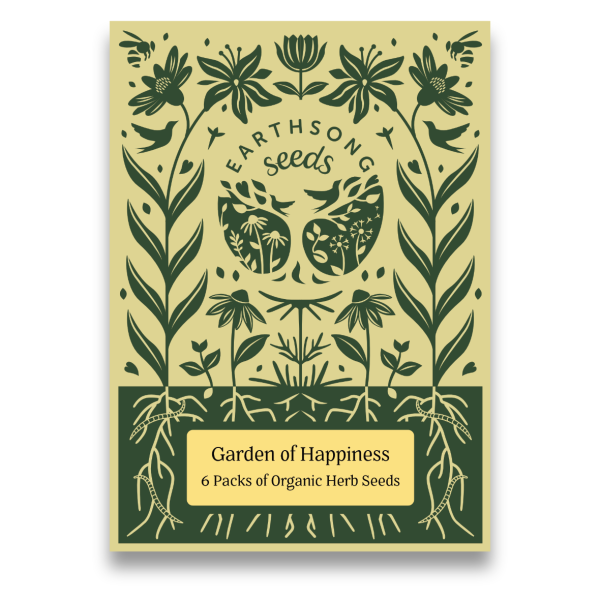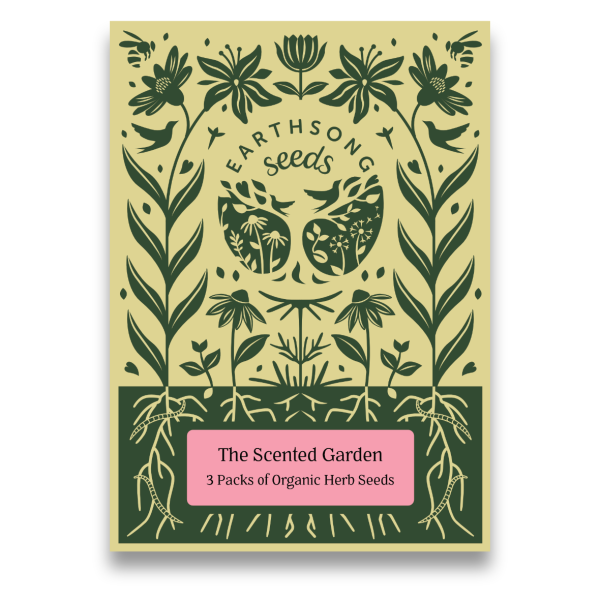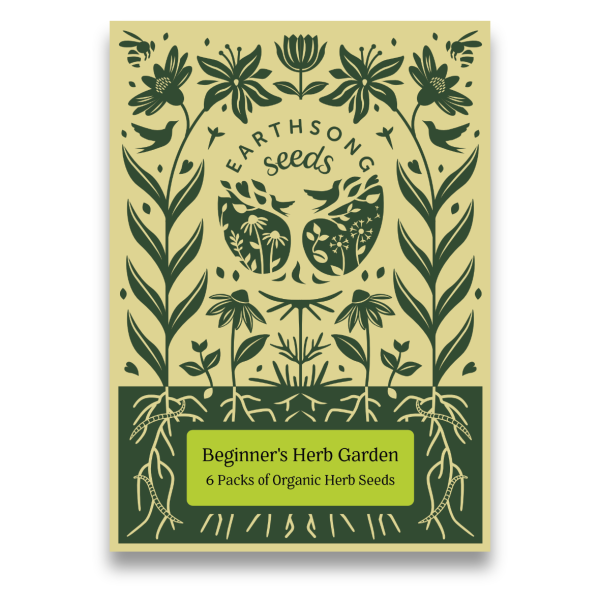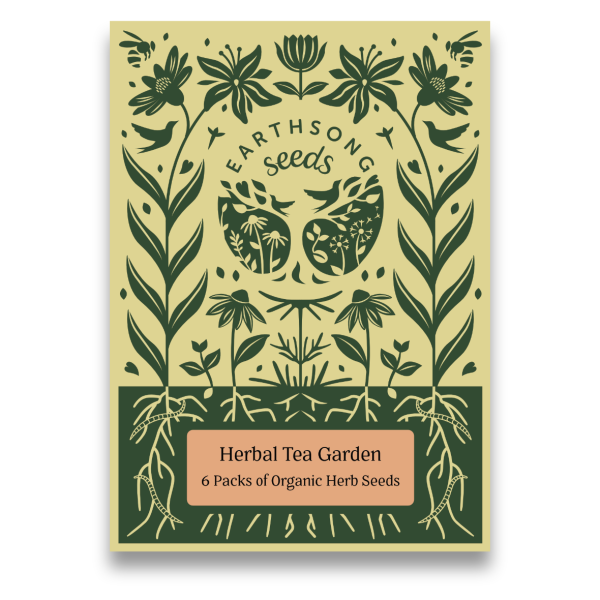You can use these herbs in all sorts of ways; fresh, dried, infused in water, macerated in oil, as syrups in honey, tinctures in alcohol or just nibbled.
One of the benefits of growing herbs yourself is that you can enjoy them at their freshest. Lavender and St John’s wort are especially good as a freshly infused oil; calendula and yarrow as a fresh poultice; chamomile as a fresh tea, spilanthes as a fresh lozenge.
Infused Massage Oils
To make infused oils from your First Aid Garden immerse the chosen plant part (e.g. lavender or St john’s wort flowers) in a carrier oil such as organic olive or sunflower oil. They are usually made at proportions of 1 part herb : 4 parts oil and infused for 2 weeks. If using fresh plants you should ‘wilt’ them for 6 hours first to remove some moisture and then strain, ensuring no water remains. The oil can be mixed with bees wax to make a salve (1 part bees wax melted into 10 parts oil) or blended into a cream. You can add a few drops of Vitamin E oil per 100ml to help preserve to oil too.
Infusing the plant in oil allows the lipophilic or fat-loving molecules to cross-over into the base oil. This combination is gently agitated daily and placed in the dark or sunlight (depending on the herb), and or/with warmth to enable the active constituents of the plant to be absorbed. These constituents are the oil-soluble compounds present in the plant including the essential oil phytochemicals. The carrier oil gently softens the plant matter and draws out the healing ingredients. Once the carrier oil has fully absorbed all the precious plant ingredients the mixture is carefully filtered. This process is similar to the long and slow brewing of a tea but a carrier oil and warmth are used rather than hot water.
Read our infused massage oil recipe on our blog. We also have some other herbal recipes on our blog including: how to make a herbal salve, how to make a herbal cream.
Tinctures
A tincture is made by macerating fresh or dry plants in a solution of water and alcohol. The tincture maceration method is tried and tested, effective and pretty easy to make. You will need some jars for storing the maceration, measuring jug, scales, record book and maybe a mill, chopping board and a pestle and mortar.
Cut the herb into small pieces, weigh the appropriate amount and then add the suitable strength of alcohol with the volume of water. A starting guide for dry herbs is to use a ratio of 1 part herb:5 parts menstruum (the liquid solvent) – in this example it means you know that 5ml of the finished tincture extract is equivalent to 1g of the herb. This blend is left to soak for 2-4 weeks, gently agitated daily, ensuring everything is fully submerged, and then strained and pressed. It is important to filter the tincture before use (a coffee percolator works well) and to label it correctly with dates, batch numbers, ratios and ingredients.
For more specific information on you can read our blog on making macerated or infused tinctures and percolated tinctures. Other herbal recipes you can find include how to make a herbal syrup and how to make a herbal honey.
Herbal Tea
Just as selecting top quality herbs is important for a great cup of tea, so are the minute details such as the amount of herbs in each cup, the shape and size of the herbs, the infusion time, the quality of water, the water temperature, the teapot, the cup……the company.
The chamomile, calendula, valerian, echinacea and yarrow from the First Aid Garden are often used in herbal infusions. 1-2 teaspoons of a blend can be infused.
Water for the best herbal tea should be fresh, pure, clear, odourless and low in minerals. Its also really worth thinking about where you get the energy required for boiling your water. Getting your energy from a renewable energy source is the best way for a positive cup of tea. Getting an energy efficient kettle is another way of ensuring you don’t waste energy.
Its also important to keep a lid over the herbs so their precious aromatic oils are kept in the tea.
Infuse the herbs in covered cup or teapot for 10-15 minutes, strain and drink. Some herbs may be infused or decocted for longer so read up on the specifics of each herb.
How to dry your herbs
Once you start drying your own herbs you will realise how good freshly-dried herbs can actually be. Lay them out on a rack and keep in a warm – around 35C – and well ventilated area for 12-24 hours, or until crisp and dry. Delicate leaves and aromatic roots must be handled especially carefully. Pick individual flowers and leaves and place neatly on your drying rack. For roots, scrub them clean, slice into smaller pieces and dry for as long as necessary. A dehydrator may be best for more predictable results and store in an airtight container.
Always read the specific information on each individual herb to find out how to use them properly.

